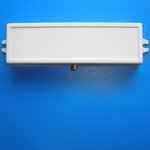long88
Member level 3

Hi all,
I am a newbie on antenna design. I am currently having a project which wanna do design an antenna with log periodic structure and for RFID applications. This antenna will cover UHF RFID band of 860-940Mhz. The dimension shall be small and suitable for handheld RFID reader.
I am planing to design a helix antenna with log periodic structure. The spacing and diameter of each turn will vary with a spacing factor. But i don't know how to calculate the parameters of antenna. eg. spacing, turn, gain.Anyone know how to calcuate? I am confuse because am i able to used the helix antenna formula to calculate?
Anyone have related journals or information please share with me! If there is other antenna structure suitable for this application, please share with me!Thank you
Best regard,
Long88
I am a newbie on antenna design. I am currently having a project which wanna do design an antenna with log periodic structure and for RFID applications. This antenna will cover UHF RFID band of 860-940Mhz. The dimension shall be small and suitable for handheld RFID reader.
I am planing to design a helix antenna with log periodic structure. The spacing and diameter of each turn will vary with a spacing factor. But i don't know how to calculate the parameters of antenna. eg. spacing, turn, gain.Anyone know how to calcuate? I am confuse because am i able to used the helix antenna formula to calculate?
Anyone have related journals or information please share with me! If there is other antenna structure suitable for this application, please share with me!Thank you
Best regard,
Long88



